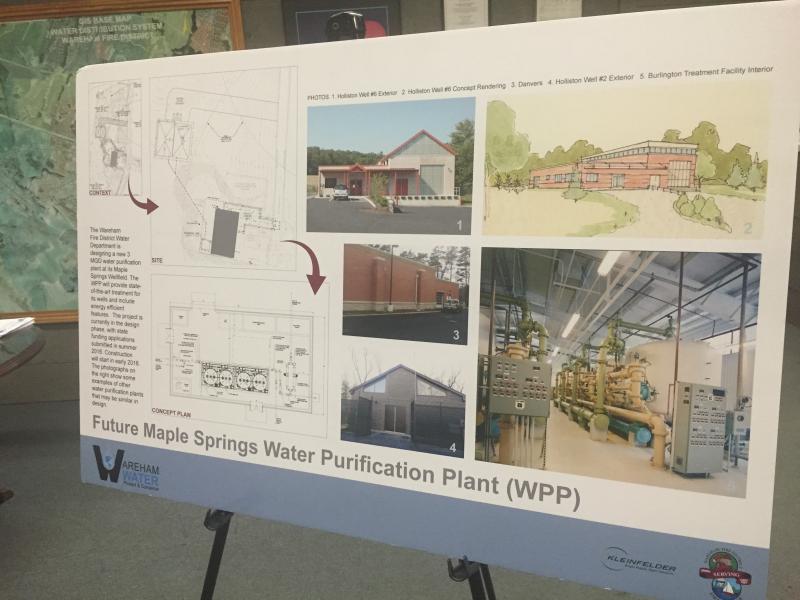Wareham water treatment plant estimate skyrockets
Construction of a new, long-awaited water purification plant for the Wareham Fire District is going to cost millions of dollars higher than projected, according to an engineering study presented Monday night.
Originally, the Maple Springs Water Purification Plant had an estimated cost of $3.5 million and construction was slated to be finished this year. In 2010, Wareham Fire District voters approved spending $2.9 million to treat water naturally contaminated with manganese pumped from Maple Park Well No. 9.
After some study, water officials decided to expand the plant to treat water from additional district wells when iron and manganese levels in Wells No. 3 and 4 rose unexpectedly. Also, Well No. 2 was found to have a deficiency which allowed surface water into the well.
In 2014, district voters approved borrowing $1.8 million for the larger plans. The remaining funds would come from the Fire District’s budget.
With construction costs creeping up and the need for several important additions, the new plant has a price tag between $9.9 million and $18.9 million.
The figure left some members of Wareham’s Board of Water Commissioners and the district’s Prudential Committee, who met jointly Monday night, reeling from sticker shock.
“I don’t want any more surprises,” said Board of Water Commissioner Edward “Jay” Tamagini III. “My biggest concern is making sure all of the i’s are dotted and the t’s crossed so we don’t come down this road again.”
For the average ratepayer, funding the plant's construction would mean billing increases. Currently, the average user pays $278 per year. Depending on the loan amount an additional $180, $110 or $95 would be added to the yearly bill if a $18.8 million, $11.9 million or $9.9 million loan were used, respectively.
Wareham Fire District Superintendent Andrew Reid said compared to nearby towns such as Marion and Mattapoisett, whose users pay more than $1,000 per year on average, Wareham’s water rates would remain affordable. For example, he said with an $18.8 million loan, a gallon of water would cost a user $0.0086.
“To put that in perspective, a gallon of Poland Spring water costs $1.80,” he said.
Reid said the original estimate omitted several key considerations, such as a dehumidification system, which added $1.5 million, generator and power supply components ($1.7 million) and an ultraviolet light disinfection system ($333,000) that would reduce or possibly eliminate the use of secondary chlorine.
Reid noted that the plant is still in the design phase. While the estimate is on the high side, Reid said the district’s engineering firm, Kleinfelder, will determine what to include in the final proposal with input from board members.
Reid stressed that even though the wells are currently able to meet demand at peak times, that won’t be the case in the future. The proposed plant is essential to providing clean water to Wareham residents, he said.
According to Reid, the maximum amount of water pumped by district wells is between 3.3 to 3.5 millions of gallons per day. A study done by Kleinfelder project future demands will be between 4 to 4.5 millions of gallons per day. Coupled with complaints related to cloudy and chlorinated water and rising iron and manganese levels, Larry VandeVenter, who is Kleinfelder’s water market vice president, said board members had a lot to consider.
“It’s a tough decision for all of you because of the materials that were detected,” said VandeVenter. “It’s a soul searching question.”
To put the question to Wareham Fire District voters in time for the annual meeting in April, the board needs to make decisions on the building and treatment process by Dec. 5, according to VandeVenter.
Reid said funding for the plant could come from a 20- or 30-year low-interest loan from the Massachusetts Department of Environmental Protection State Revolving Fund. Reid said the district could get a 2.0 percent rate for a 20 year loan or a 2.4 or 2.9 percent interest rate for 30 year loan.
If OK’d at the district meeting, Reid said the project could go out to bid in 2018 and be completed by 2020, which is when the loan repayments would begin.














